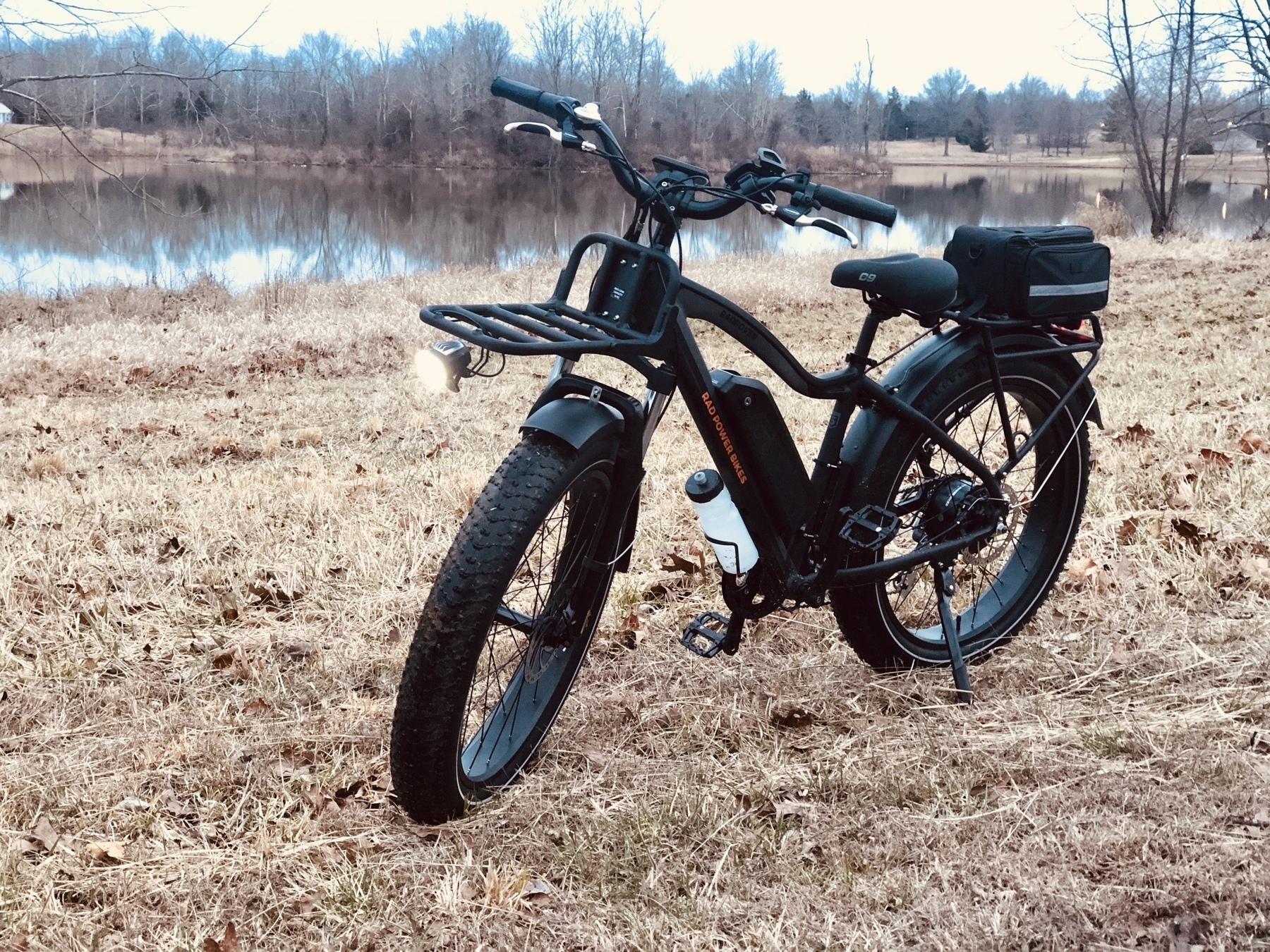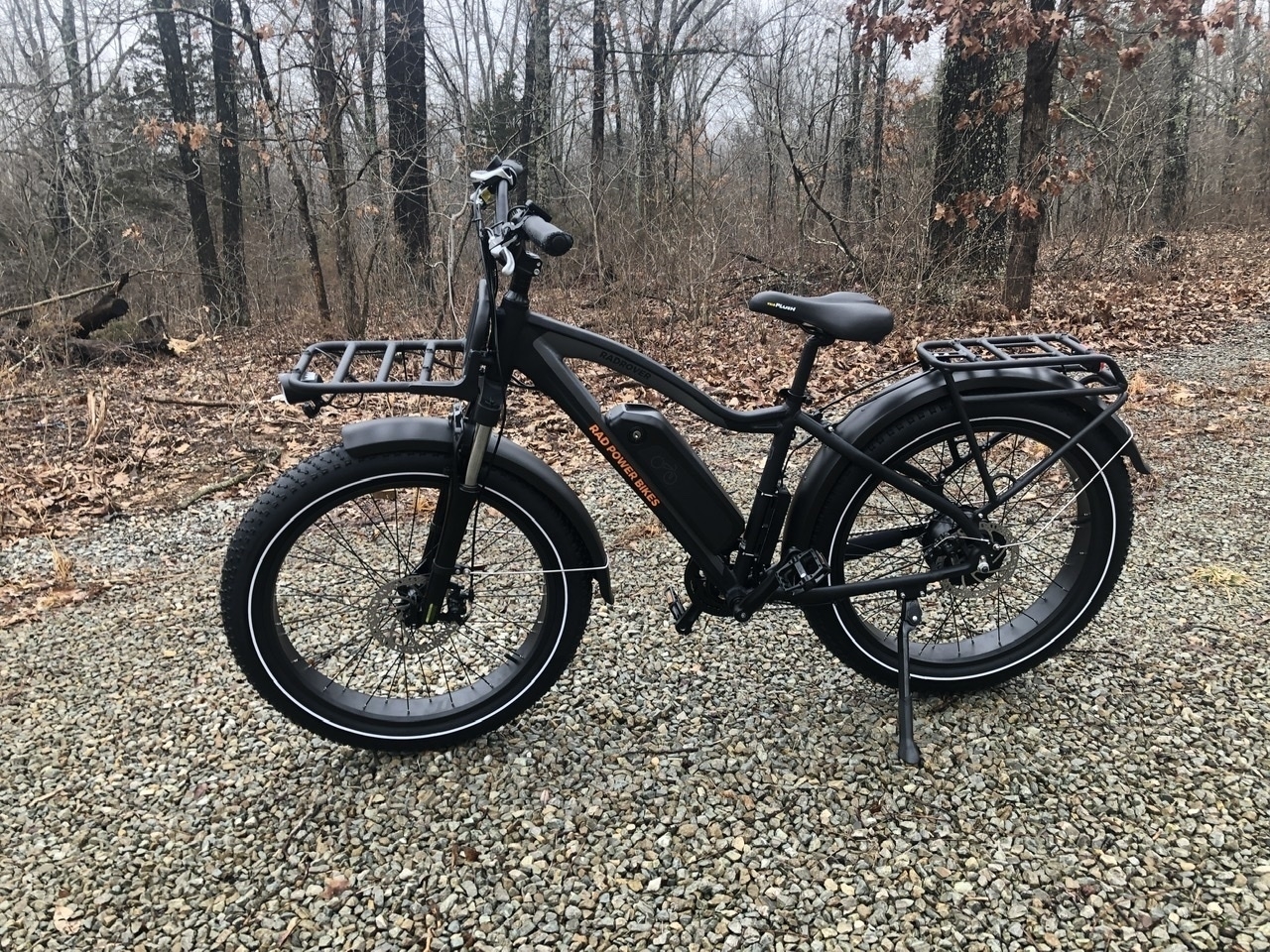Rad Rover First Impressions Mini Review
(Note: As I wrote this first impression it occurred to me that I’d like to also write a follow-up digging into what makes electric bikes so fantastic as a form of transportation in terms of enjoyment and efficiency. That will be next on the list.)

It’s a very nice ride. Too early to say if it’s everything I hoped it would be when I decided to get a second bike because a big part of that is hoping I’ll be able to get 35 to 45 miles per charge instead of the 28 I’m getting with the Lectric. It takes three 12 hour “balance” charges to get the batteries conditioned to something close to full capacity. After today’s 24.5 miles I’ve used 2 of the 5 bars. So, I’ll guess I’m at around 45 to 55% remaining. With the Lectric the same mileage has been leaving me at about 35%. The Lectric has 10 bars and also a voltage meter for more precise measurement. The Rover has 5 bars, no voltage meter so I’ll have to ride it a bit and learn more about how the five bars translate into range in real-world riding. My understanding would be that each bar represents a 20% range so 1 bar: 0 - 20%, 2 bars: 20 - 40%, 3 bars: 40 - 60%, 4 bars: 60 - 80%, 5 bars: 80 - 100%.
Another aspect of batteries and range also comes into play here. Something I’ve learned about the Lectric is that the lower half of the battery is not the same as the top half. Below 50% and it seems to drop more quickly and as it drops available power to the engine drops as well. So, in the top 50% I might expect to get 15 miles at full power. In the bottom 50% I can expect 12 miles with progressively less power. The last 20% of battery provides far less power to the motor. As I understand it some of how the rider experiences an electric bike will vary based on how the controller has been tuned. Each brand and model providing a variety of batteries, motors and controller means a different experience.
Since I’m on the topic of the electronic part of the bike I’ll go ahead and cover some other differences in that area. Namely that while I do indeed seem to be on target for more range there is also a significant difference in how the two bikes accelerate, maintain speeds and the levels of pedal assist. I expected this largely in part to the difference in while size. The Lectric with the 20” diameter wheels has more torque and feels much zippier from start. It’s also got a more limited 12-28 cog. In PAS 3 it tends to hover around 17-18 with moderate pedal effort. Pushing speed beyond 22 requires a good bit of effort. By comparison the Rover with it’s 26” feels slower from the start but it does get up to it’s cruising speed fairly quickly and once there is higher and easier to maintain. In PAS 3 it tends to run at about 20 to 22. I can push the speed up to 25 with the higher 6th or 7th gear with light to moderate effort.
I’ve got 7 weeks of riding with the Lectric and only a day with the Rover so I’ll really need to spend more time with it to get a fuller view of how it’s performing at the different PAS levels and how it performs in terms of speed and range. On the tail end of the first ride I tried the bike out at PAS 1 and 2 and found it similar to the Lectric. One difference being that I found that I wanted to use the thruster more at these levels, especially PAS 1 where the Rover seemed slower. I found that I could run it at PAS 1 and mix in the thruster at a partial twist to get a significant speed bump while also keeping the watt usage low.
A last bit on the electrical system that seems most significant to me is the display of data which is similar. One difference already mentioned is the less detailed view of battery offered by the Rover. But I like that the watts being used allow me to have a sense of what my range will be. The Lectric does something similar showing the amps being used. With the Lectric I find myself going back and forth between amps being used and current battery voltage. With the Rover I can only see the watts being used which is more limited but I almost preferred it. Not sure why.
On to the feel of the Rover and how that compares to the Lectric. The Lectric with it’s 20” wheels is shorter. It’s stand over height is way lower. It’s easier to mount and feels zippier. All benefits over the Rover. But even with the very nice suspension seat post the Lectric feels like a much rougher ride especially on our gravel which has some fairly rough patches. The Lectric feels like the ideal ride in a city space with busier streets, shorter rides and smoother roads.
The Rover has a much higher stand over height. It weighs about 6 lbs more. It has a longer wheel base. The feel of riding it is very different from the feel of the Lectric. I immediately felt much higher up off the ground and also in a more upright position, almost squished which is funny because it’s a bigger bike! The reason for this is that the distance between the front of the seat and the handlebars is significantly less. The Lectric stretches the user out with a distance of 19” compared to the Rover’s 16”.That may not seem like much but the rider really feels it! The only height for the Rover handlebars is 47” which is pretty high up but right for the geometry of the bike. This will of course mean a different feel for riders of different heights that adjust the seat according to height. The Lectric handlebar height is adjustable with a low of about 42” and a max of about 50” which is a nice feature as it allows for changing mid ride. In general though the Lectric feels like a smaller bike and I feel stretched out regardless of my handlebar height. A couple photos might help illustrate.


The Lectric feels like a small speed boat. Highly maneuverable and fast but very bouncy on the waves. The Rover feels like a yacht (not that I’ve been on a yacht, I’m guessing here). Smooth and very stable! With the larger wheel base and suspension fork our gravel road is a much nicer ride. The bumps are far less noticeable and the overall ride felt far more stable. When I ride down our gravel road on the Lectric I find myself feeling cautious with fingers on the brakes. Same on the steep blacktop hill on my county road ride. On the Rover higher speed on hills feel natural and safe.
Overall comfort on the Rover feels better on a long ride. When I finished yesterday’s ride my butt was a tad more sore because I rode with the stock seat. But overall, I felt better. When I’m riding the Lectric I tend to have a little discomfort on the list 5 miles of my ride. I think it’s the result of the rougher ride and the geometry of the bike. I tend to feel a bit of back ache too. Not terrible but it’s there. I didn’t notice this on my first Rover ride.
So, two very different riding experiences and I’ll know more after I get more rides in with the Rover but my first impression is that I greatly prefer the increased comfort of the Rover to the zip and nimbleness of the Lectric. I wanted greater range for longer rides on these back country roads and I do think the Rover is going to provide that. Even better, it provides an overall smoother ride and higher cruising speeds with greater stability which will be noticeable on the hilly and rougher gravel roads. No doubt I’ll provide a follow-up after I’ve had another couple weeks with the Rover.